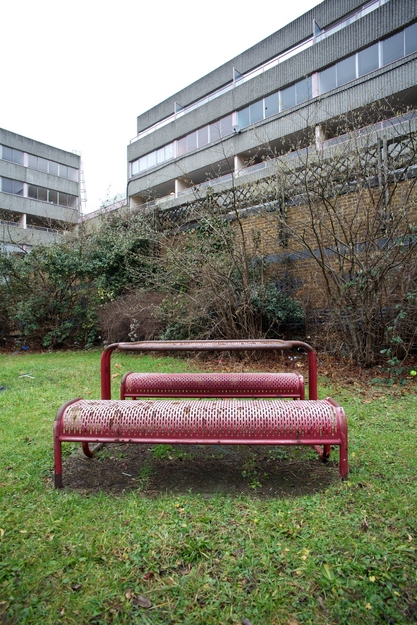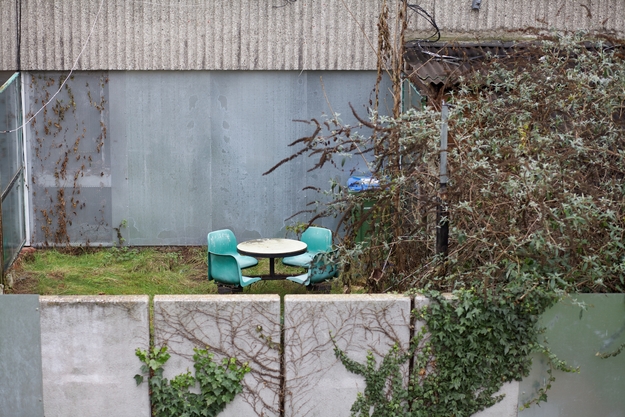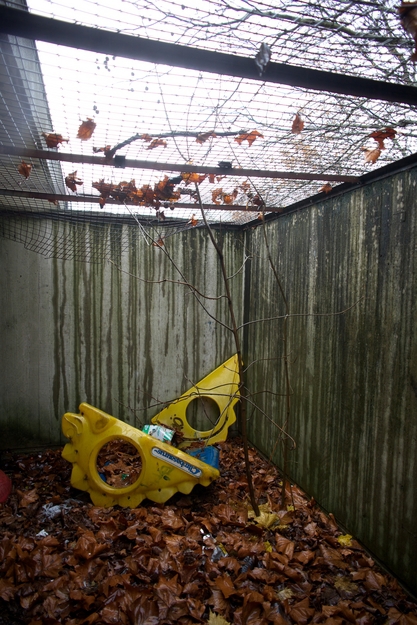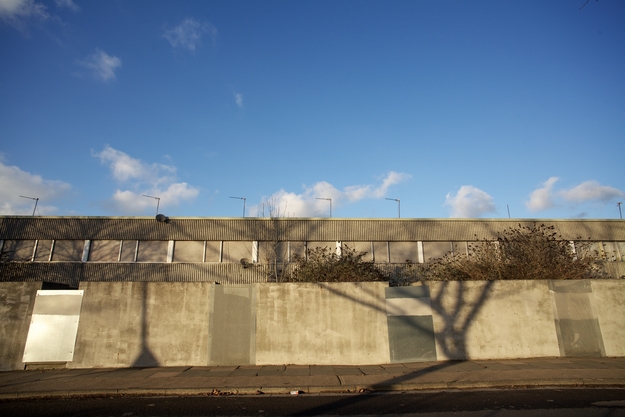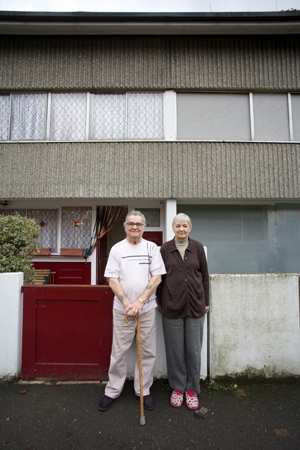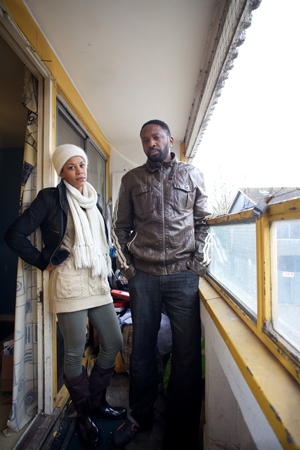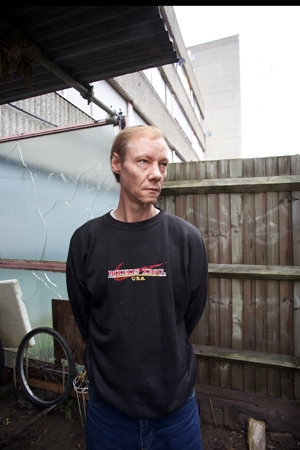'This used to be a happy place’
South east London’s notorious Ferrier estate is facing the bulldozers to make way for phase two of a £1 billion regeneration scheme. But despite its bad reputation, some residents are refusing to leave. Emily Rogers asks why. Photography by Julian Anderson
Gritty, crime-ridden, notorious - these words have stuck to the Ferrier estate like mud in just about every mention it gets from the outside world.
Local MP Nick Raynsford recalls his surgeries in the 1990s being dominated by residents desperate to leave the estate, which provided the bleak backdrop for the tale of a family afflicted by drugs and violence in Gary Oldman’s 1997 film Nil By Mouth.
The run-down labyrinth of concrete-panelled tower blocks in Kidbrooke, south east London, was pieced together at the tail end of the 1960s and early 1970s. Now Ferrier stands in the dark shadow of the wrecking ball. Demolition work to make way for a 20-year, £1 billion rebuilding project started nearly two years ago and around 85 per cent of the estate’s original 1,910 households have left to forge new lives elsewhere.
But despite its bad reputation, not everyone has been keen to go. At the end of last week, 190 council tenants and, it’s thought, 22 homeowner households remained living in defiance of the wreckers. But their days, like that of the crumbling concrete around them, are numbered. Greenwich Council wants them out and three months ago took 31 residents to court with repossession orders.
The landlord argues it needs residents gone before April, when work on the second phase of the regeneration must begin if Greenwich is to secure £21.5 million from the Homes and Communities Agency to pay for it (Inside Housing, 19 November 2010). ‘We are not engaging with the PR on this,’ a council spokesperson said when asked for up-to-date information on the clearance.
Inside Housing understands the 31 residents issued with orders have now been evicted or been persuaded to move to alternative accommodation and that the council plans to serve eviction notices on those left. But some are digging in their heels and refusing to budge.
Here are the stories of some of them, together with pictures of what has become of the environment that has been home to so many, for so long. Welcome to the hidden world of cherished personal space that lies beyond the doomed concrete.

The retired couple
Dennis and Kathleen Courtnell
Disabled pensioners Dennis and Kathleen Courtnell, both 75, have lived in the same four-bedroom house in Gallus Square, one of the oldest parts of the Ferrier estate, since 1970.
They were among the first residents on the estate when they arrived from their three-bedroom flat in Bow, east London, with their six children, then aged between five and 15.
‘I didn’t want to move from Bow, but when I walked in here, it was like walking into Buckingham Palace,’ remembers Mrs Courtnell. ‘To me, there was nothing better. We all started off knowing one another, beginning a new life together. All the children made friends. They called me Nanny Kath. I was like an agony aunt. You used to chat out of the window.’
Now the couple are isolated in their square and in a vulnerable situation. They have been both council tenants and joint owners of their house but now are neither, following a transfer of ownership of their home to their son Ricky in October 2009. The Courtnells are accusing the council of unfairly stripping them of their right to a comparable property. Instead, they have been offered what they describe as a ‘tin roof shack’ with one bedroom in Mottingham, a nearby suburb.
‘When I got there and saw it, I was physically sick,’ recalls Mrs Courtnell, who is in remission from cancer and has a chronic lung disorder. ‘I’d rather have committed suicide than live there.’
The couple, who have 10 grandchildren and 11 great-grandchildren, insist only a three-bedroom home with a garden will get them out of their house. ‘We’ll stay here until the bitter end,’ says Mrs Courtnell. ‘We’ve been together 62 years and they won’t part us. We’ll hold hands and
stay here.’

The social worker
Kenny Abioro
The past few months have been a stressful time for 40-year-old social worker Kenny Abioro, who moved into his one-bedroom flat in Crozier House nearly eight years ago.
He has now accepted an offer of alternative accommodation in central Greenwich, which he is moving into with his 27-year-old partner Jennifer (pictured left) this month. He says it is in a much better area, but has less space, forcing the couple to leave furniture behind. Ferrier homes are at least a fifth bigger than those built to already generous Parker Morris standards. ‘It’s something that a lot of people might take for granted, but I can’t see flats being this big ever again,’ he says.
Mr Abioro says he was ‘not jumping for joy’ when he first moved into Ferrier, but his flat was spacious and comfortable. When he arrived, he wanted to buy his home, but was told it was not for sale as it would be knocked down.
He says there was a sense of community when he moved in, as people were pulling together in a time of change. ‘I’ve been to a couple of friends’ parties who live around the estate and it’s just weird with them all gone [since],’ he says. ‘It just feels like a big emptiness.’
Mr Abioro says he has seen no improvements on his estate over the past few years and feels residents were forgotten about once the demolition plans were decided almost a decade ago. ‘It just seems like the council left everything to the last minute and just wants everybody out,’ he says. ‘The whole experience has left a very sour taste in my mouth.’
He says of the council’s regeneration plans: ‘When I see it then I’ll believe it. I need to see what they’re doing first to see if it’s worth all this headache and all this hassle. They need to make sure that it’s worth it.’

The care giver
David Bowie
David Bowie, 48, has lived in Lebrun Square for more than 25 years. He says the three-bedroom maisonette he shares with his disabled stepson is the last remaining occupied home on the square, which he first moved to with his parents and two younger brothers.
Last week Mr Bowie abandoned his legal fight against Greenwich Council to remain in his home after exhausting his legal aid funding. He had hit back hard, claiming the alternative properties the council offered him were far too small to accommodate his stepson.
‘They’ve offered me lots of tiny places and it’s just not good enough,’ he said, speaking before his legal bid ended. ‘I happen to be a full-time carer looking after a disabled person and they’re not taking that into consideration.’
Ferrier holds bittersweet memories for Mr Bowie, who has been a carer for 22 years. It was here that both his parents died, as well as his fiancée Marisia, the mother of his stepson. She died from a heart attack two-and-a-half years ago.
Mr Bowie met Marisia 22 years ago in the estate’s New Horizons Centre, where she was a dance instructor. He remembers everyone meeting at the popular community centre, which has since closed. ‘This used to be a nice estate,’ he remembers. ‘It was a community, everybody kind of looked out for each other. Then it just went downhill after a few years and got a bad reputation. That bad reputation has stuck. Some families moved off and new families moved in from different areas, gangs started and stuff like that.
‘Now there aren’t enough people left for there to be a community. It’s not the same, you can see it all getting knocked down all around you. It’s a bit depressing. It used to be a happy place.’
